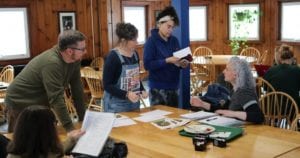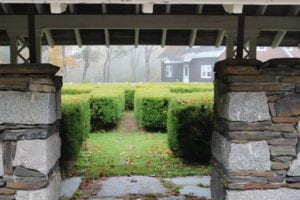 Once upon a time, the story begins… and instantly we are transported. Those four simple words cast a spell around the world, with translations in virtually every language promising a journey to a “time” that is also a place, like a magic carpet or hidden castle that we “once” might have come “upon” in another life. Once upon a time is as effective as a sorcerer’s wand at compelling us to suspend disbelief and enter the realm of fairy tales. Or, as science writer Maria Konnikova mused in a 2012 post for Scientific American, “Once upon a time… is an invitation for fantasy and imagination to take the stuff of real life and do with it what they will.”
Once upon a time, the story begins… and instantly we are transported. Those four simple words cast a spell around the world, with translations in virtually every language promising a journey to a “time” that is also a place, like a magic carpet or hidden castle that we “once” might have come “upon” in another life. Once upon a time is as effective as a sorcerer’s wand at compelling us to suspend disbelief and enter the realm of fairy tales. Or, as science writer Maria Konnikova mused in a 2012 post for Scientific American, “Once upon a time… is an invitation for fantasy and imagination to take the stuff of real life and do with it what they will.”
When I was a child in Connecticut, I lived next door to a woodland amphitheater that I now view as the physical embodiment of Once upon a time. Tucked at the end of our suburban cul-de-sac, this magical stage was constructed entirely of marble, with bench seating for 500, surrounded by towering hemlocks. I used to take my dolls over and play out stories of friendship and betrayal. I used to take my friends over and act out stories of folly and love. But the story of the theater itself was more fantastic than anything we could make up.
Once upon a time (the only fitting start to this story) there was a young man named Horton, whose parents dined out with the Hemingway’s in Paris and whose father, the scion of a great lumber dynasty, dreamed of performing on his very own stage. When Horton grew up to be an architect, destiny offered him the chance to grant his father’s wish.
The Great Depression might not seem like an auspicious time to build a Greek amphitheater in the middle of the woods in New England, but the idea took root when Horton designed a home for the owner of a Vermont stone quarry. It so happened that the area around Horton’s family estate in Connecticut was populated with expert masons and stone cutters who’d immigrated from Italy – and in the 1930s these craftsmen desperately needed work. So, inspired and encouraged by his father, Horton took his payment from the quarry owner in marble, planned his vision for a “pool in the forest,” and gave the masons a job that would last three years.
Over the next six decades this quixotic creation would provide the stage for concerts and poetry readings, community plays, dance and music recitals. A few couples were married in the theater. Every now and then there were parties. Yet most of the time it kept hidden, like a secret castle, behind its screen of sentinel pines.
Surrounded by private land, the stage could not be accessed by the public. Open to the elements, the theater was unusable in winter. And occupying more than an acre, it required considerable maintenance to prevent the trees from dying and the marble from being buried under leaves and lichen and moss. My friends and I had to sneak in past “No Trespassing” signs, which, of course, added to our sense of magic. We called the theater the Marble Palace. But those who didn’t understand the power of Once upon a time took to calling it Horton’s Folly.
Horton’s father had died ten years after the theater was completed. Fifty years after that, it was Horton’s turn. The land was sold, and the new owners had no interest in fairy tales, living or otherwise. They let the theater fall into ruin, then they sold it again.
This month the bulldozers moved in. The trees already have been cut to the quick. The marble will be yanked out and put to more prosaic uses. The setting made for “A Midsummer Night’s Dream” will be replaced with McMansions. The living fairy tale is no more.
And yet, the narrative endures. For, what is Once upon a time if not a means of holding on to treasures we have lost. Like bygone dreams. Like childhood. Like time itself.
Horton and his father set their example of Once upon a time in stone, and now the Marble Palace has taken its place as a fairy tale of my own. But this is hardly a unique sequence. We all have people, places, and moments in our lives that we associate with magic. It is our job, our joy, our privilege as writers to keep those invitations to fantasy and imagination alive. And that’s why I’m telling you this story of once upon a time…







